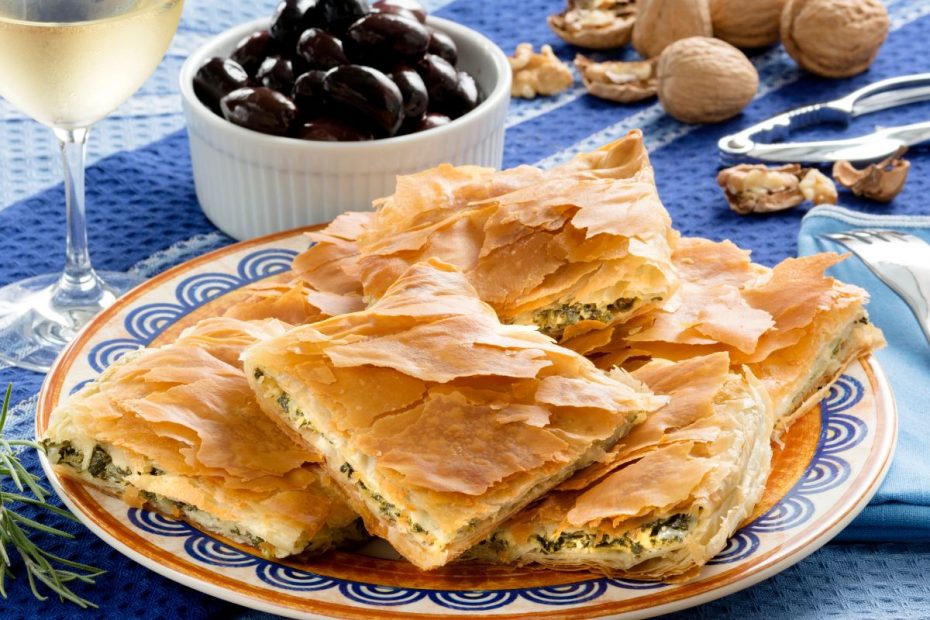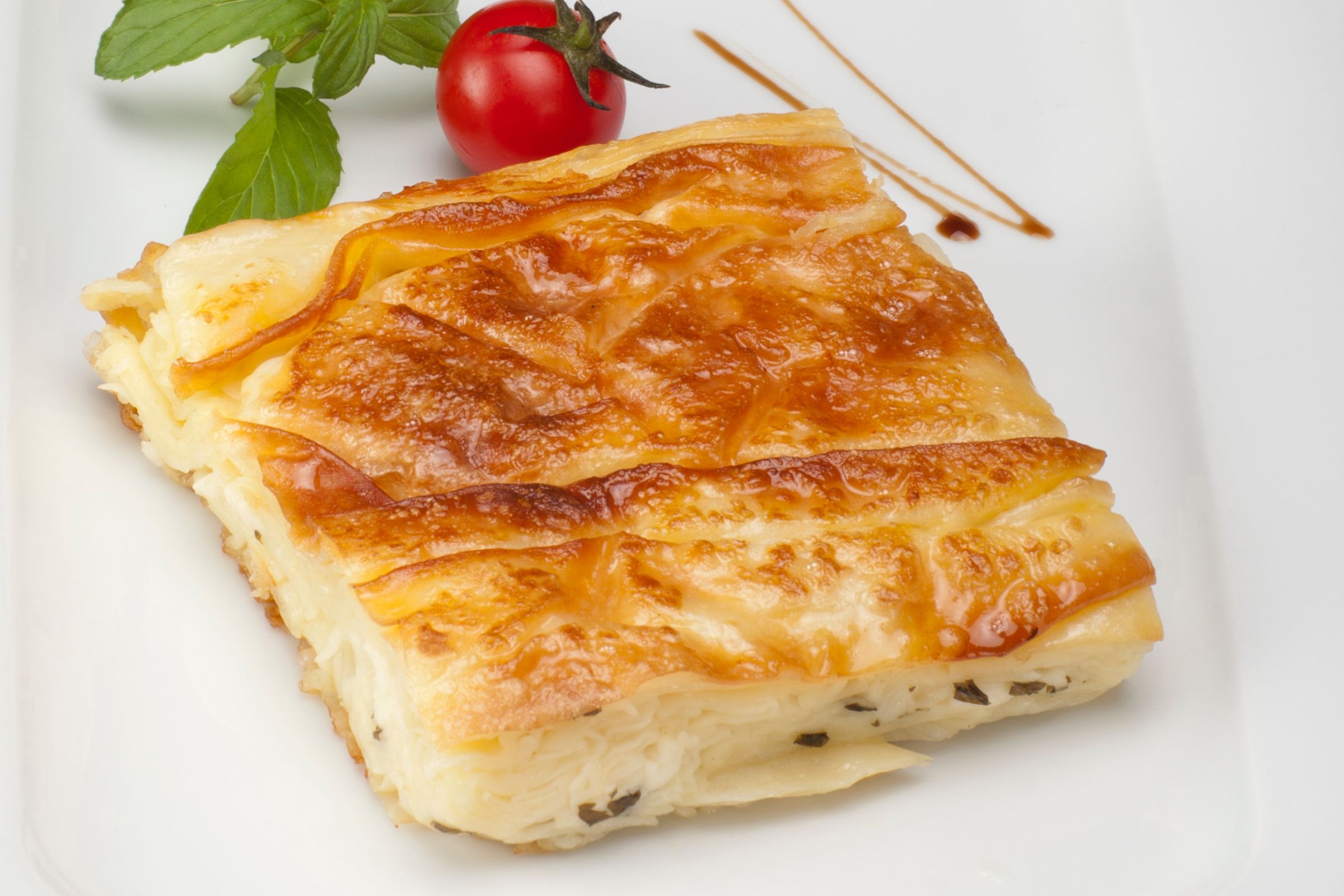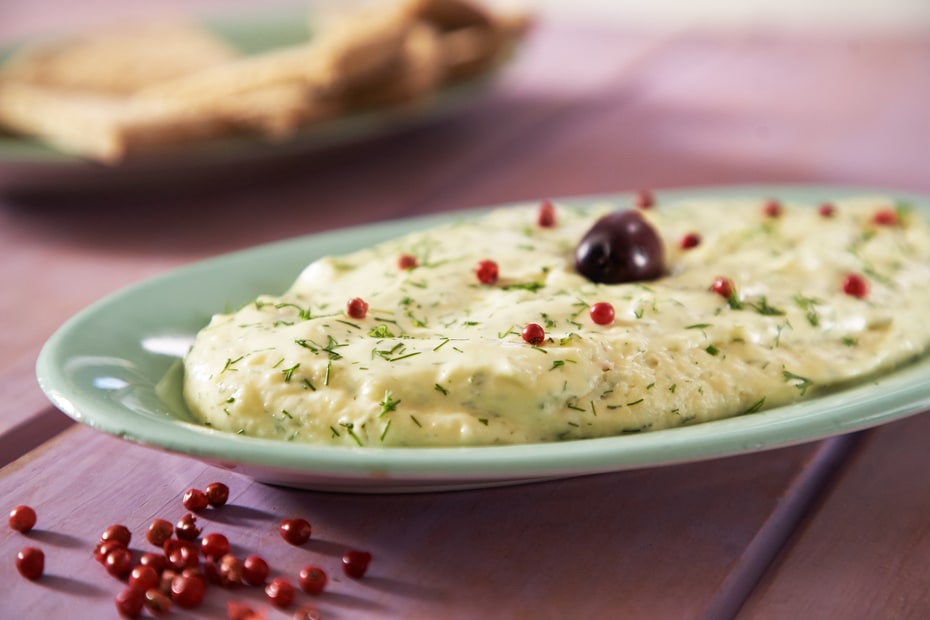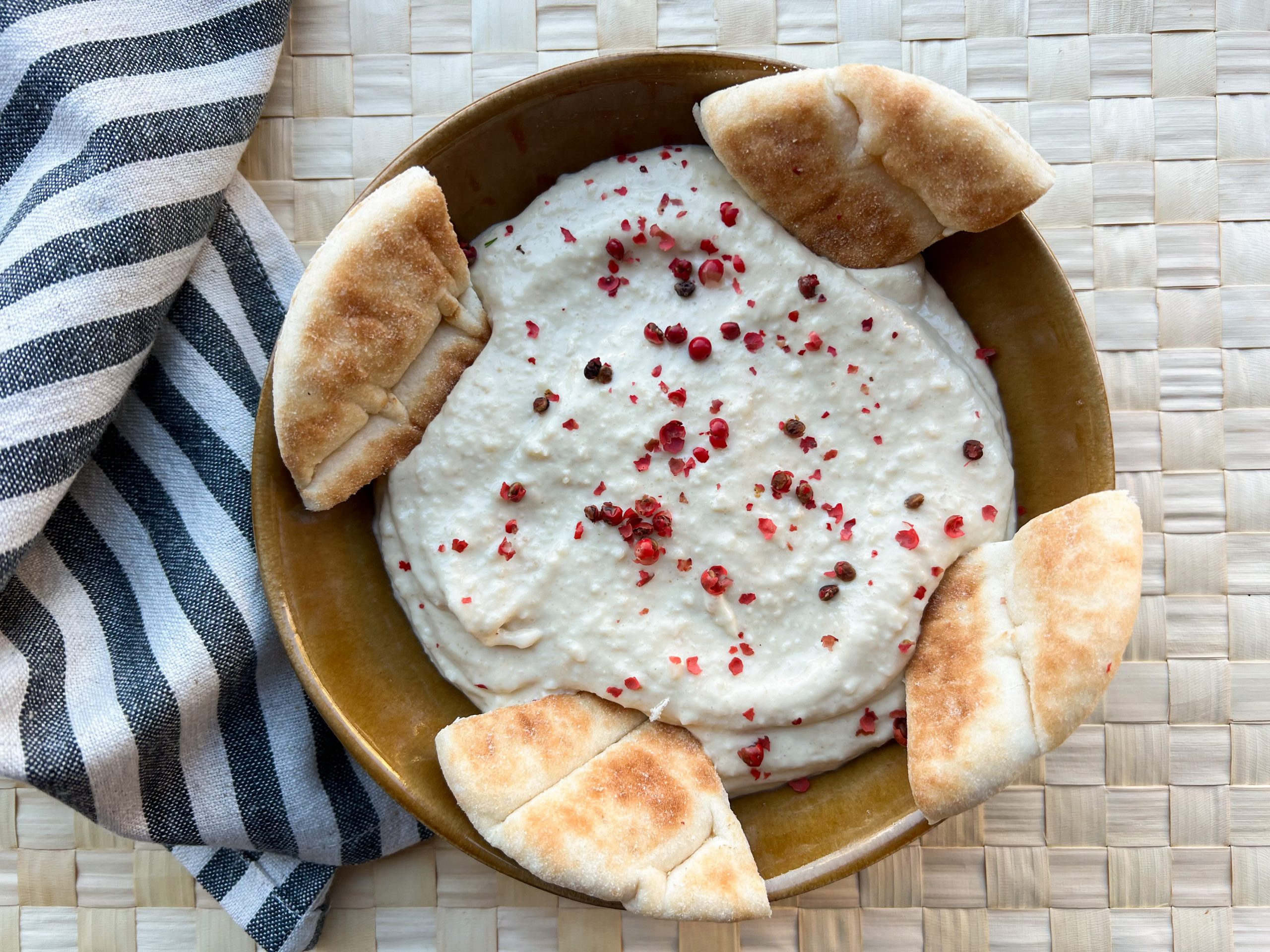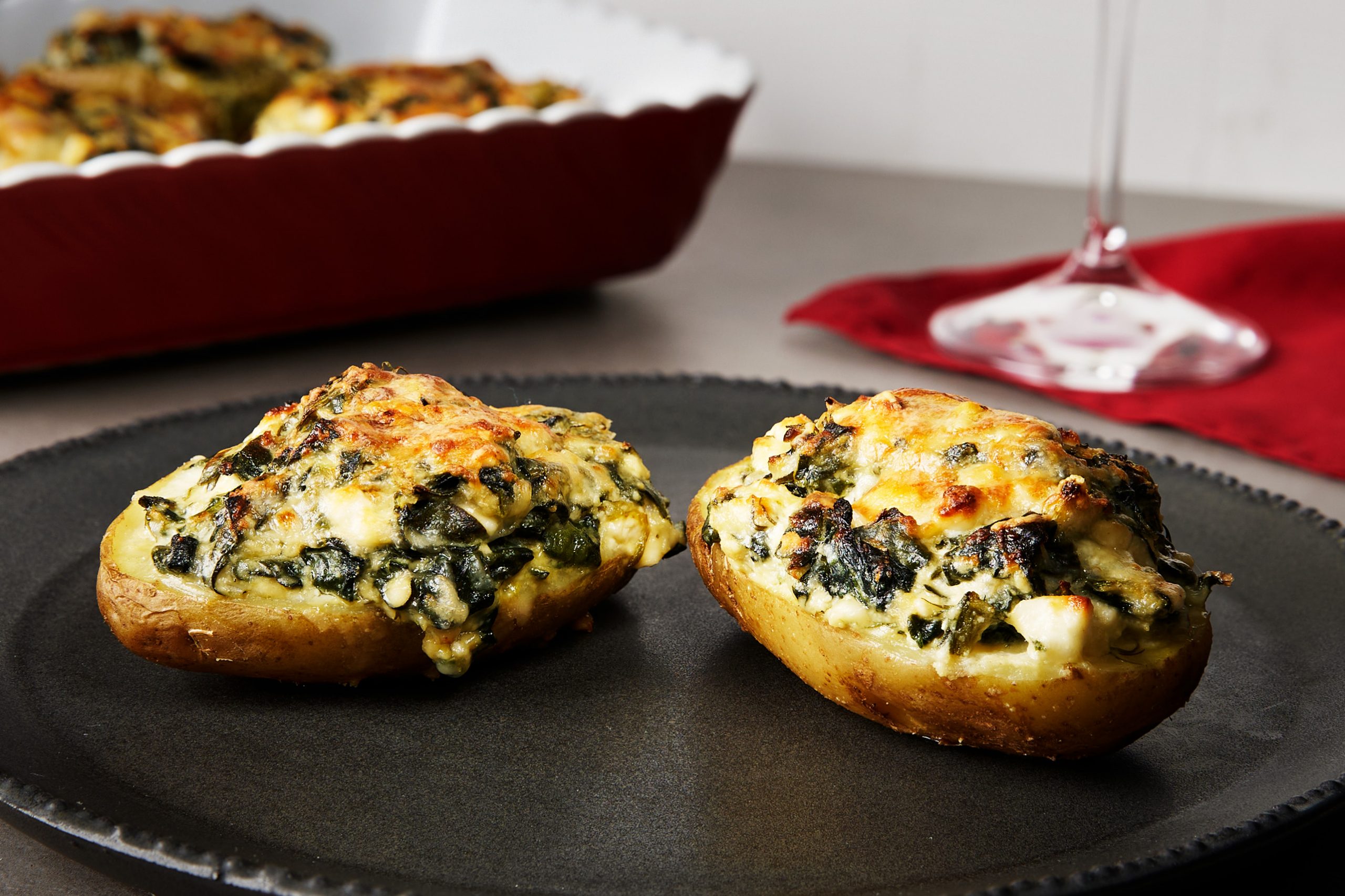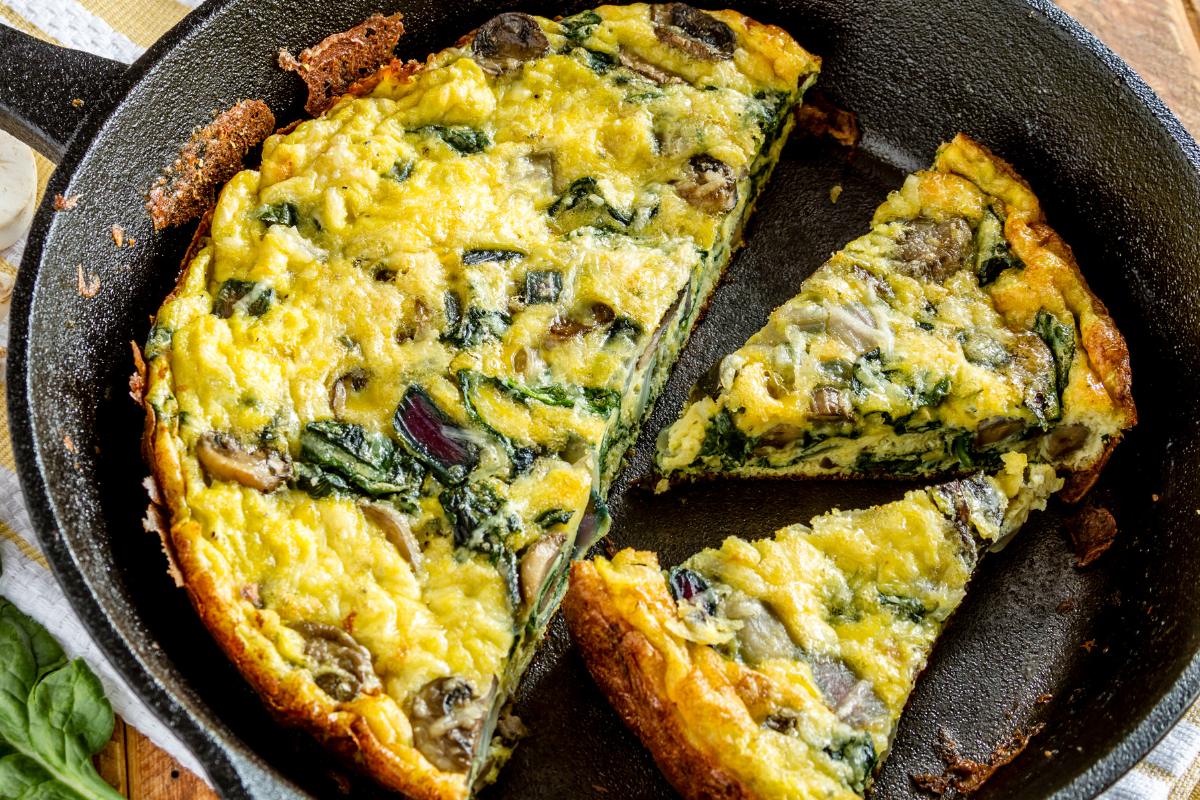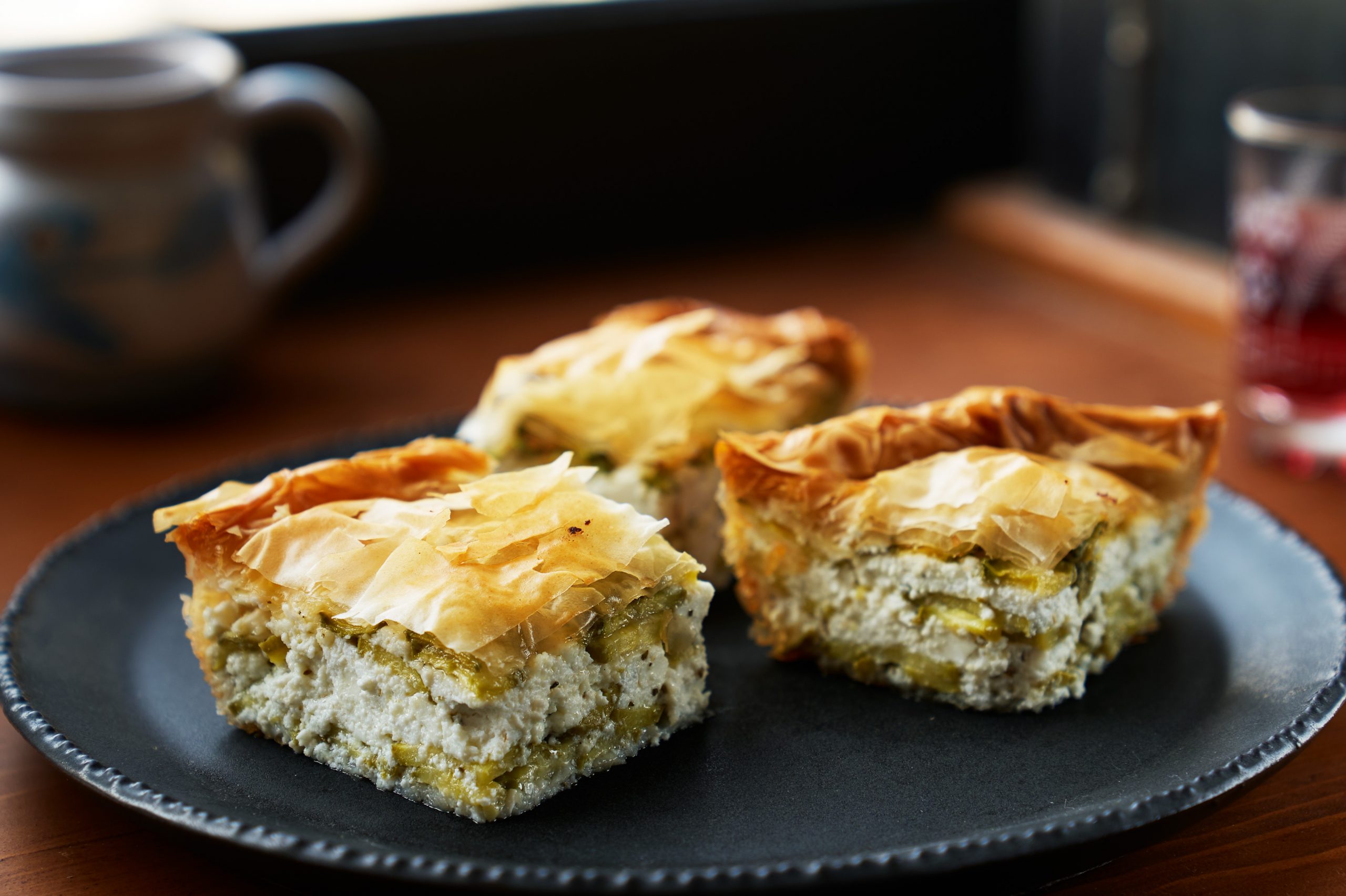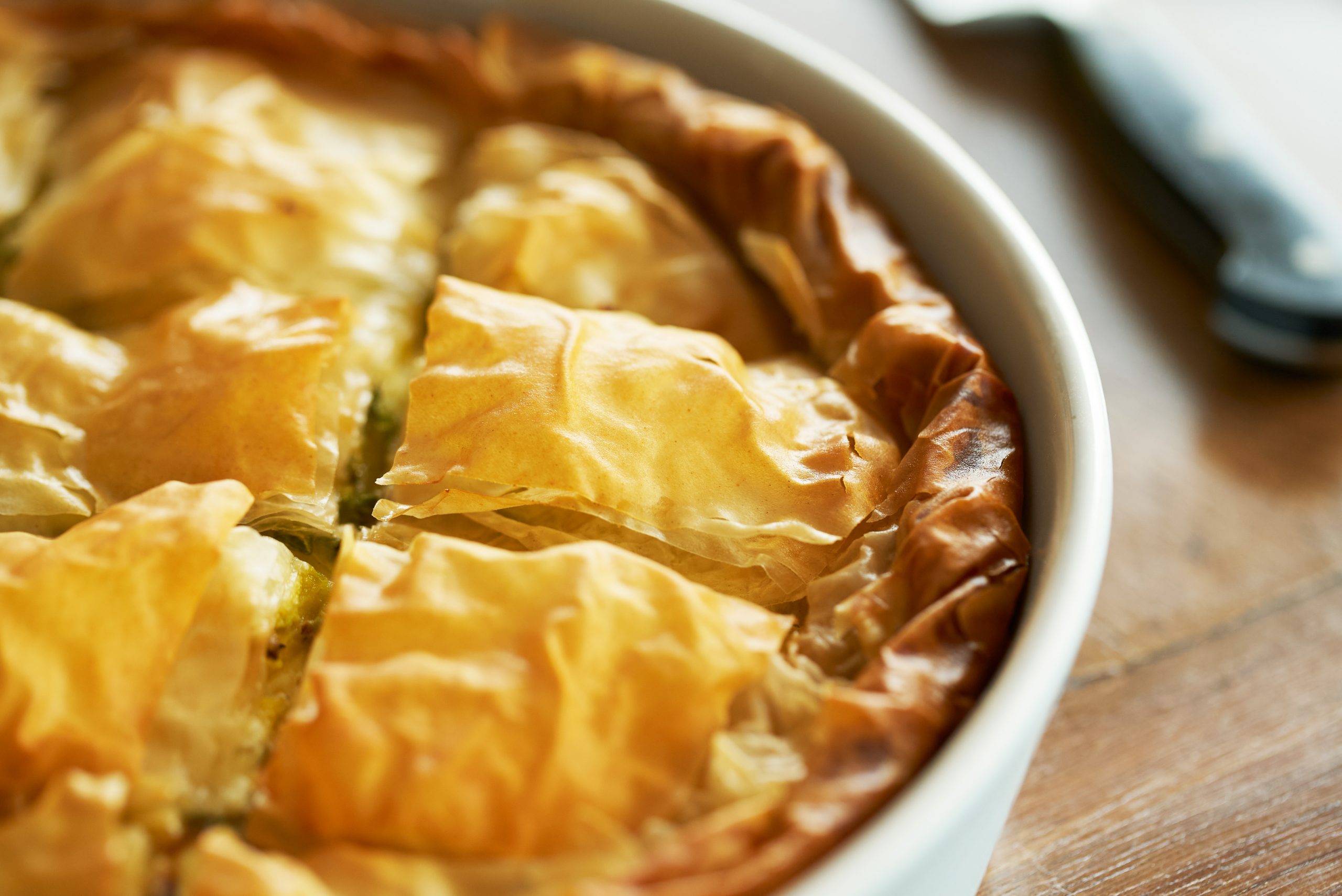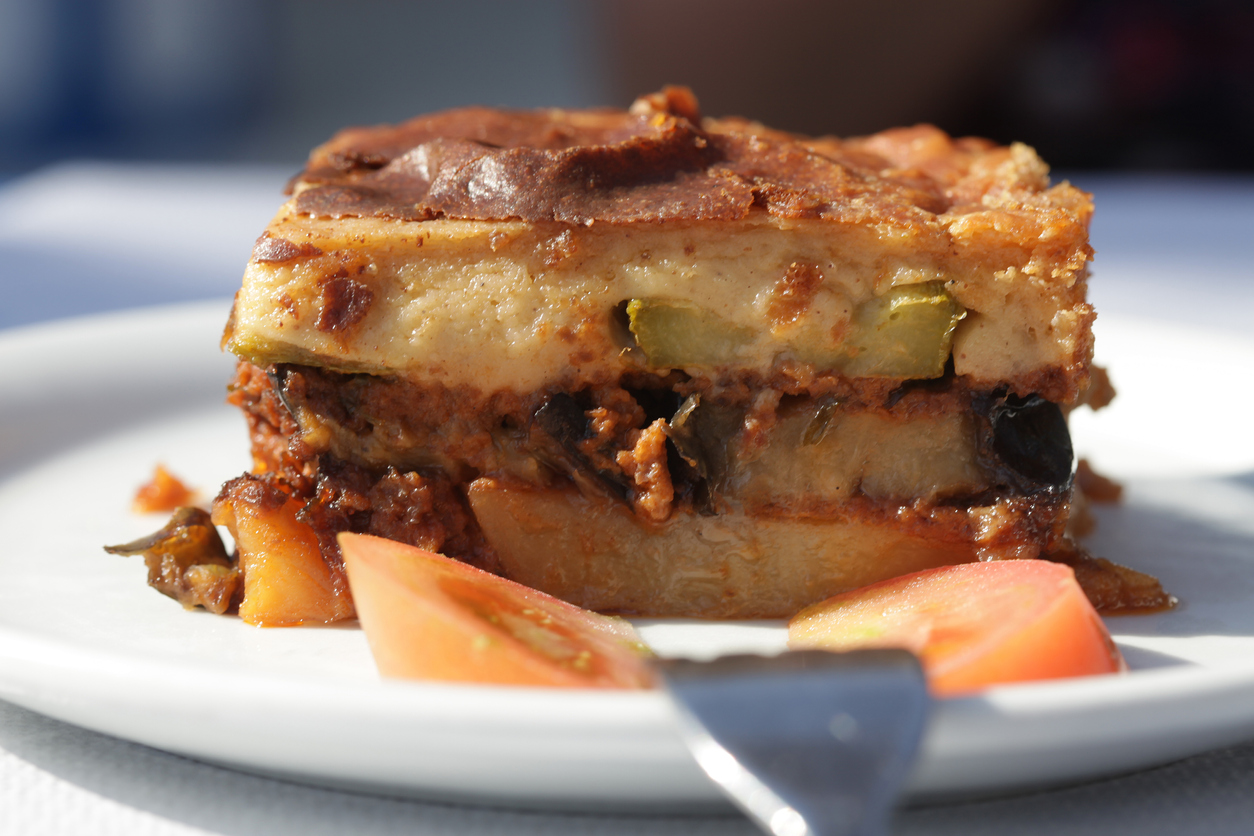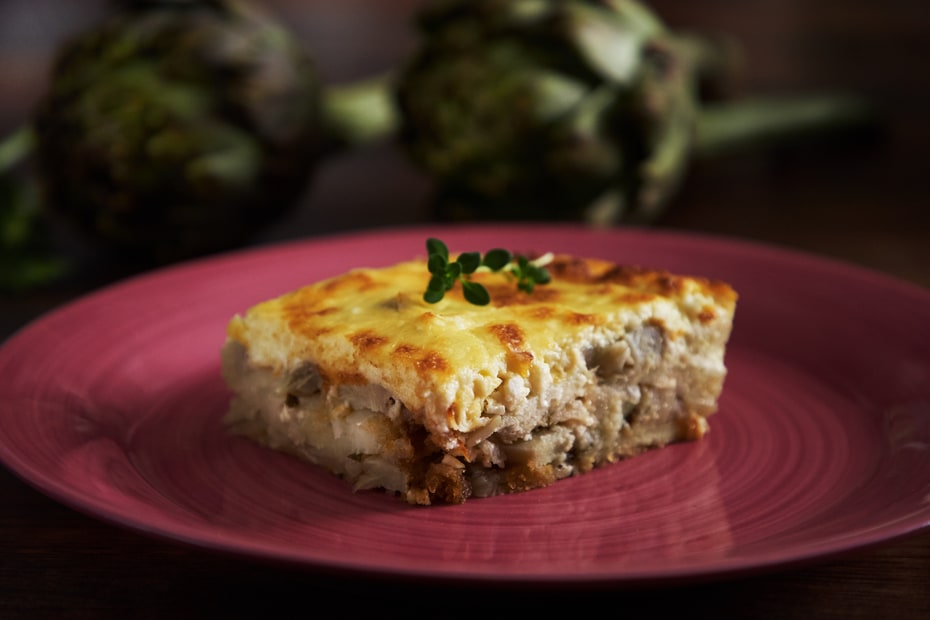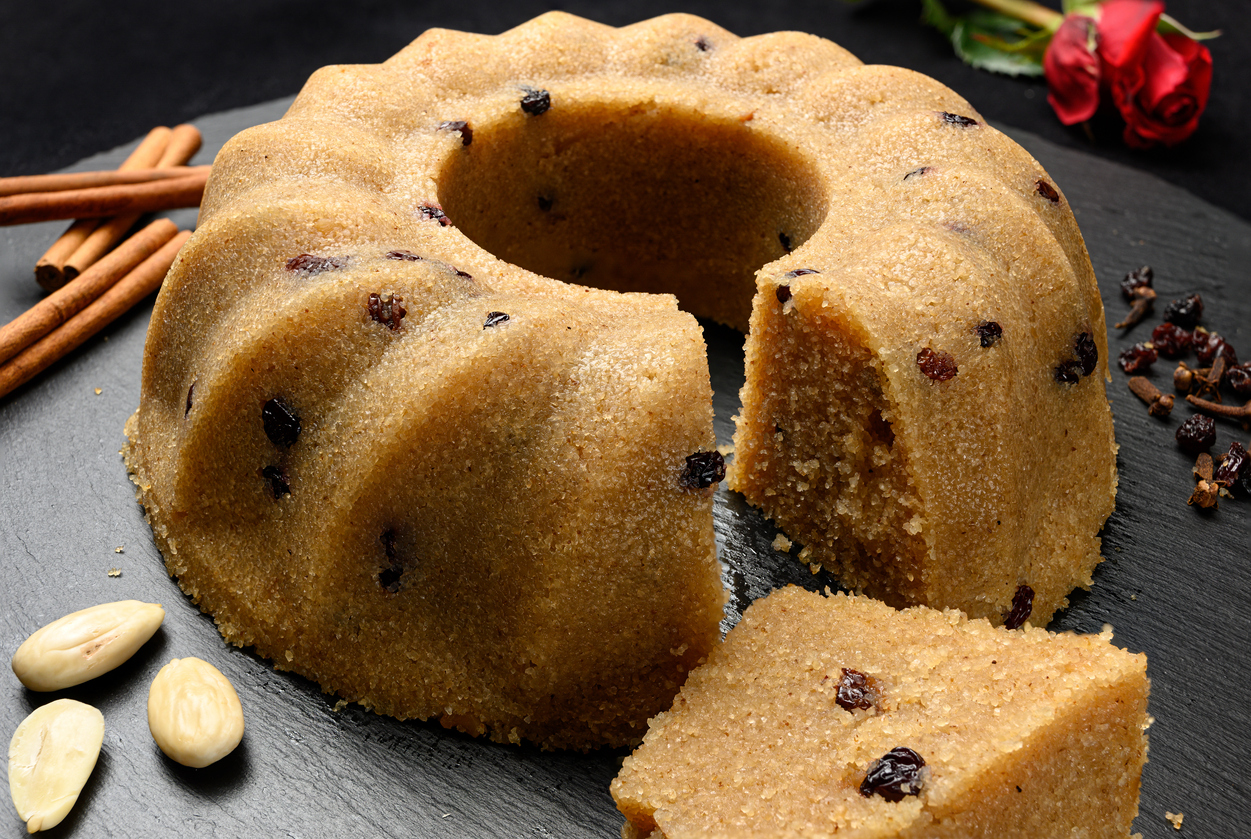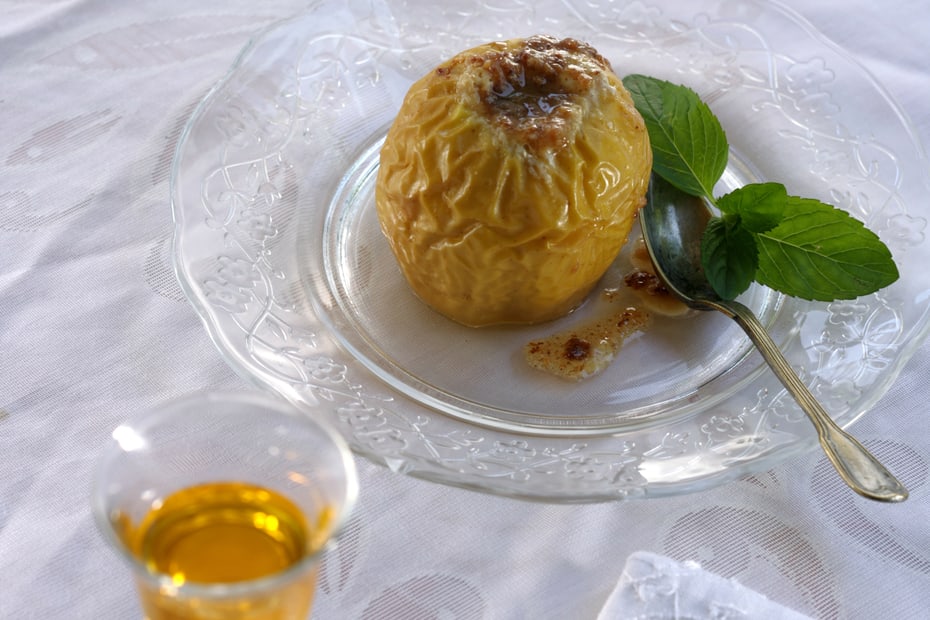If you love Greek food and Greek recipes, there are a few dishes you absolutely must check off on your Greek cooking bucket list. They feature plenty of interesting ingredients, like tarama, the tiny fish eggs that are whipped into a rich and salty dip, Greek feta, extra virgin Greek olive oil and more.
Greek Recipes for Savory Pies and Homemade Phyllo
These classic and innovative Greek recipes also involve important cooking techniques – notably, making hand-rolled phyllo, which forms the most important part of many traditional Greek savory pies! Yes, it can sound and look challenging, but don’t be deterred. If you’re tasting pies around the country, you might find that there are slight regional variations when it comes to making phyllo. For instance, in Crete, there might be a little tsikoudia (a grape distillate like grappa) added into the mix, or if you’re in the Ionian islands, yogurt is a common addition and makes the dough springy.
But in general, the recipe leans on a combination of all-purpose flour or semolina flour, olive oil, water, salt, and acid (like lemon juice or vinegar). And, like with many recipes perfected in various home kitchens over many years of practice, the ratio of these ingredients can differ depending on where you are and who you ask. I often add whole wheat to the mix, and am starting to experiment with almond flour and other gluten-free options, but have yet to come up with a recipe that satisfies me!
Greek Recipes in Two Versions
It’s not at all unusual to find vegan, vegetarian, and meat-filled versions of the same recipe, like the Greek kitchen classic moussaka. This premise is found throughout all of Greek cooking – in fact, 2 versions of the same dish are common and are often made at different times of the year depending on holidays like lent, which necessitate a special diet.
Greek Recipes to Try
Scroll on for the 5 necessary Greek recipes to try either when you’re in Greece or in your own kitchen back home!
Taramosalata
Tarama is the roe (tiny, almost microscopic eggs) of carp, cod, or mullet. It has a rich, salty taste, and it forms the base for one of Greece’s most famous dips, taramosalata, which is widely available in Greek restaurants the world over and a classic during Lent! There are many regional recipes and a few contemporary ones for this famous, fluffy pink dip. I have a few recipes for this classic Greek recipe, but perhaps the most classic is my Taramosalata – Fish Roe Spread, a recipe from season 2 of My Greek Table that advocates for the extremely liberal use of olive oil in developing the creamiest spread possible.
I also love it in this Taramosalata with Blanched Almonds, Tortilla Wraps and Pink Peppercorns. Taramosalata is great alongside pita wedges, fresh vegetable sticks or as a side to other Lenten classics like boiled beet salad and beet greens with olive oil and vinegar.
Spanakopita
It has long been my stance that everything can benefit from a spanakopita-fication, and my site reflects this strong belief! Let’s start with this Spanakopita Muffins recipe, which makes great use of the Greek classic spinach pie filling (minus the onions and/or scallions), but in this form the spinach-feta duo morphs into something kid-friendly, fun and healthy! To my mind, this is the Mediterranean diet aiming to win over the hardest customers: young ones who are usually picky eaters.
It’s also the perfect way to add a little green to whatever else you’re eating. These Spanakopita Baked Potatoes from Season 4 of My Greek Table will become a family favorite (especially around the holidays).
I also add the mix of spinach, onions, and scallions to classic brunch dishes, like Spanakopita Shakshuka and Spanakopita Frittata with Pine Nuts, but it also goes great in other popular recipes, particularly Spanakopita Macaroni & Cheese and Spanakopita Grilled Cheese – minimum effort required, with the maximum spanakopita effect!
Savory Pies with Homemade Phyllo
There’s so much more to pies than spinach! A good pie, made with fresh and delicious homemade phyllo, is the perfect recipe for breakfast, lunch, dinner, or even a quick snack – think of it as the Mediterranean diet on the go! My Phyllo Pie With Zucchini, Feta & Mint can be everything from breakfast and brunch to lunch and a lain course at dinner. I cooked it for a group of young artists and gallerists in Athens, during an episode of My Greek Table in which we explored the art scene in the Greek capital.
Another great option that will work for any meal? Chicken Phyllo Pie with Two Greek Cheeses and Herbs, an easy dish to make for company, a great brunch idea, and something that can make good use of leftover chicken! This Greek recipe for Pleated Phyllo Pie with Feta, sometimes called Crinkle Pie across social media (!), is a very easy way to make a delectable Greek cheese pie, or tyropita. And I love this Simple Onion Pie – Kremmydopita, which also features phyllo that crisps up beautifully when you bake it!
Moussaka
Moussaka is quite possibly the most iconic Greek recipe in the world. It is, of course, a rich mixture of spiced ground meat sauce, eggplant (and sometimes potatoes and/or zucchini), and bechamel, often made even richer with the addition of Greek cheeses as feta. Moussaka is an indulgent Mediterranean diet recipe. for sure! It is part of the Greek diet but not something we eat every day. In the summer and in other seasons, it is typically a Sunday meal.
But there are so many delicious variations! Let’s start with Artichoke Moussaka with Caramelized Onions and Feta, a delicious, meatless rendition, made sweet by the copious amount of caramelized onions that are layered in the pan. And this delicious Vegan Moussaka recipe will delight the most diehard traditionalists! It is an excellent combination of classic Mediterranean diet ingredients, such as vegetables and beans, all the wonderful robust flavors associated with Greek cooking, and a few new techniques that will surprise you.
Halva
This dessert is so simple, but also so hard to do well, infused with delicious spices that are typical of the cuisine and a few surprises too! The store-bought variety is made with tahini (sesame paste) and sometimes studded with nuts and raisins, or marbled with chocolate (a slight but tasty aberration). It is sold in blocks or made in large pans. Home cooks prepare halva, too, with semolina flour, olive oil, water, and sugar syrup. The result is more like a grainy pudding. Sometimes nuts and raisins are added to the mixture, and sometimes cinnamon is sprinkled on top. This type of halva is called Halva tis Rinas.
Halva, Orange-Spiced Semolina Pudding Cake with Dried Fruits and Nuts is a great version of a halva dessert. It’s easy to make and it’s great as a dessert and even for breakfast. And apples are a great, naturally sweet treat during the fall, that only get better when you stuff them with halva. Toss this dessert in the oven, and you’ve got my Baked Apples Stuffed with Halva! It’s easy to make, but the presentation will make your diners think you’ve created something much more intricate.
